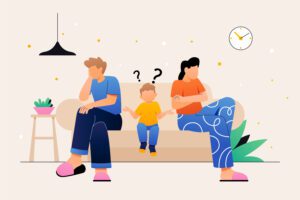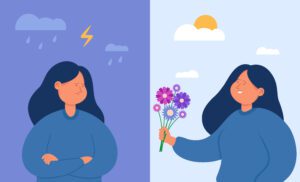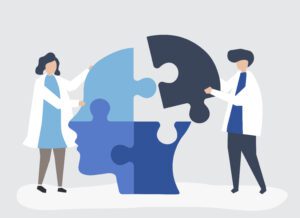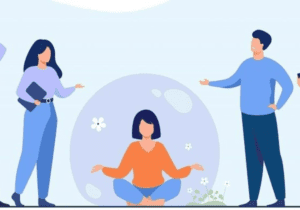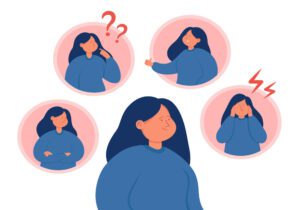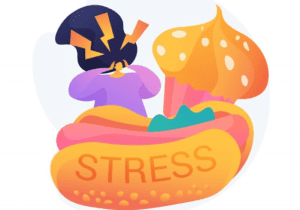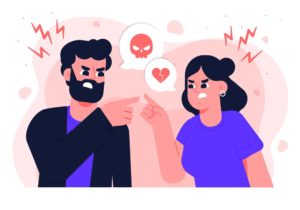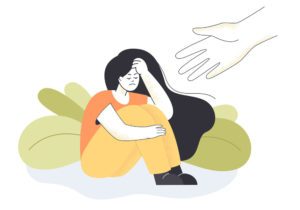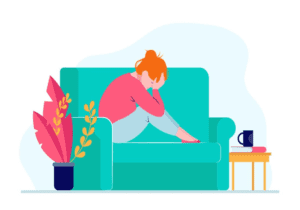Your Partner, Your Symptom ! A Different Way of Seeing Relationships
This article has been researched and written by Yassine Tayie. AI has not been used in producing this article.
This is an invitation to look at relationships from a different perspective, inspired by Jacques-Alain Miller’s thesis, “The Partner as a Symptom.”
Let’s start with a quick definition of a Symptom: In Lacanian psychoanalysis: the symptom isn’t simply a fault, but it’s the way the subject’s system holds together; it’s what organises their system. It’s the ugly duct tape on a leak: seeing it disturbs you but tear it off before you get to understand it’s role, and you flood the house.”
Which brings us to today’s theme: partner-as-symptom. Seen through this lens, what we call “dysfunctional” in a relationship may be precisely what sustains it. Your partner might often be your symptom, «your duct tape». What most irritates you is tied to what draws you in.
Example: you’re meticulous; you like everything tidy. Surprised, you fall for someone delightfully chaotic. At first it’s charming; Move in together and, suddenly, you’re arguing about where things belong — while still oddly glued to each other. A duct-tape fit, if you like.
How does this operate in a relationship? What do we unconsciously seek?
Individuals don’t enter love with what they have so much with what they lack. “To love is a wish to be loved” – in that sense, each of us seeks to be loved for our leak — the bit the duct tape covers — rather than the functioning facade.
A simple (cliché) vignette : Let’s see how that might operate in a relationship.
For an “X” reason, Person A is looking for a partner — a duct tape — with the following description: “ someone who can provide for me.” In love-terms : “If my partner provides, they love me — then I feel loved.”
For a “Y” reason, Person B is looking for a partner — yes, their duct tape — with the following description: “ someone to provide for.” Love-terms : “If I provide, my partner loves me — then I feel loved.”
Once upon a time in Dubai — Fate, Tinder, Cupid, take your pick — Person A meets Person B. Match made. It works as long as A keeps asking and B keeps providing. The circuit runs; both feel loved.
When the symptom shifts:
We might think it’s all sorted, but then comes the challenging part.
Life happens, A or B are evolving; their symptoms start shifting – A wants to be more independent; B doesn’t want to define their worth through providing to other. Then the squeaks, the leaks, and the slips start:
B : “Oh, you only love me because of what I have, not because of who I am.” “I’m a person, not a wallet with legs!”
A : “I don’t want an allowance; I want to feel held.” “You buy things so you don’t have to be here!”
Then the relationship keeps leaking, evolves, finds another set-up, reinvents itself to keep going, or breaks. And what happens when it breaks? Well, if neither of the two knows the “X” or the “Y” reason we stated earlier, then guilt, anxiety, and insecurities fill that void.
What we take from it ?
Here’s the strange beauty: even when relationships are difficult — or gloriously singular — they’re chances to learn about ourselves, our symptoms, our X’s (exes) and our Y’s (whys).
- This only confirms the truth of these phrases we often hear — «My other half», «My life», «My loved one». It’s less an attempt to possess the other (still illegal, by the way) and more a way of saying the partner mirrors and sets in motion parts of myself I don’t quite have a hold of.
I hope you enjoyed this as much as I did writing it — take it as a cheeky challenge to think differently, not a license to start calling your partner ‘ my symptom ’ instead of ‘ my love ’.”
How to Help Your Child with Anxiety Through Divorce
Divorce is a significant change that affects every member of a family. For children, the uncertainty and adjustments …
Depression vs Sadness: Understanding the Difference
While often used interchangeably, the terms “sadness” and “depression” represent distinct emotional states, each with …
5 Simple Mental Health Practices for Your Everyday Life: Nurturing Your Body & Mind
In today’s fast-paced world, it’s becoming increasingly evident that we need to place our mental health at the forefront
Ways to Reduce Anxiety in 2024
As we say farewell to 2022 and usher in the New Year, we look towards the future. With New Year’s resolutions on the docket, many of us are striving to achieve a calm life …
Navigating Compassion Fatigue in the Digital Age: A Call to Prioritize Mental Well-Being
Amid the constant stream of information and images that flood our screens, the toll on our mental well-being can be …
The Link Between Anxiety and Overeating
All of us have encountered moments of stress and unease throughout our lives. These feelings of anxiety not only bring…
10 Steps To Fix A Toxic Relationship
Every relationship has its fair share of ups and downs, but when toxicity creeps in, it can become a serious challenge. Toxic relationships can be emotionally draining and detrimental to our overall …
Exploring the Benefits of EMDR Therapy for Anxiety and Depression
Anxiety and depression are two of the most common mental health disorders worldwide, affecting millions of people every year. While traditional talk therapy and medication can be …
Health Effects of Untreated Depression
It’s very common to feel sadness at one point or another in our life. Depending on your specific circumstances, you may even feel …
Psychologists vs. Psychiatrists – What’s the Difference?
Clients shouldn’t have to jump through hoops to understand who the perfect candidate is for treating their emotional and/or behavioral struggles. Yet, understanding the type of provider you should see during …

